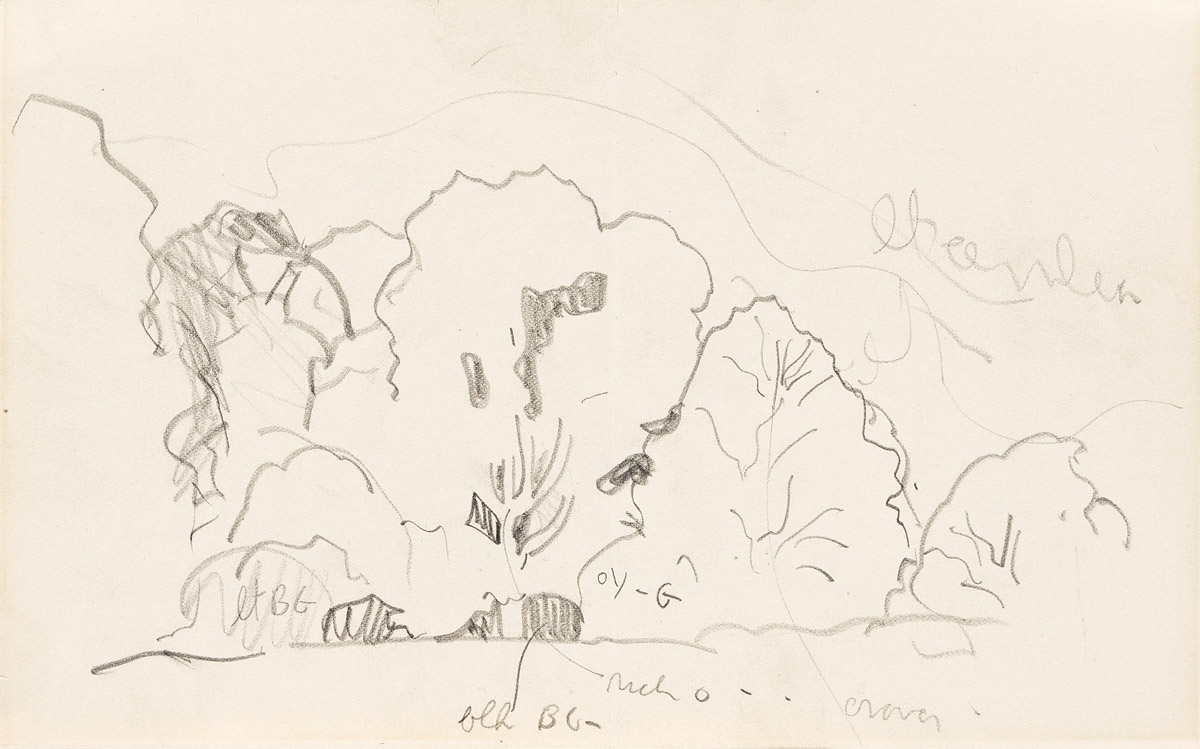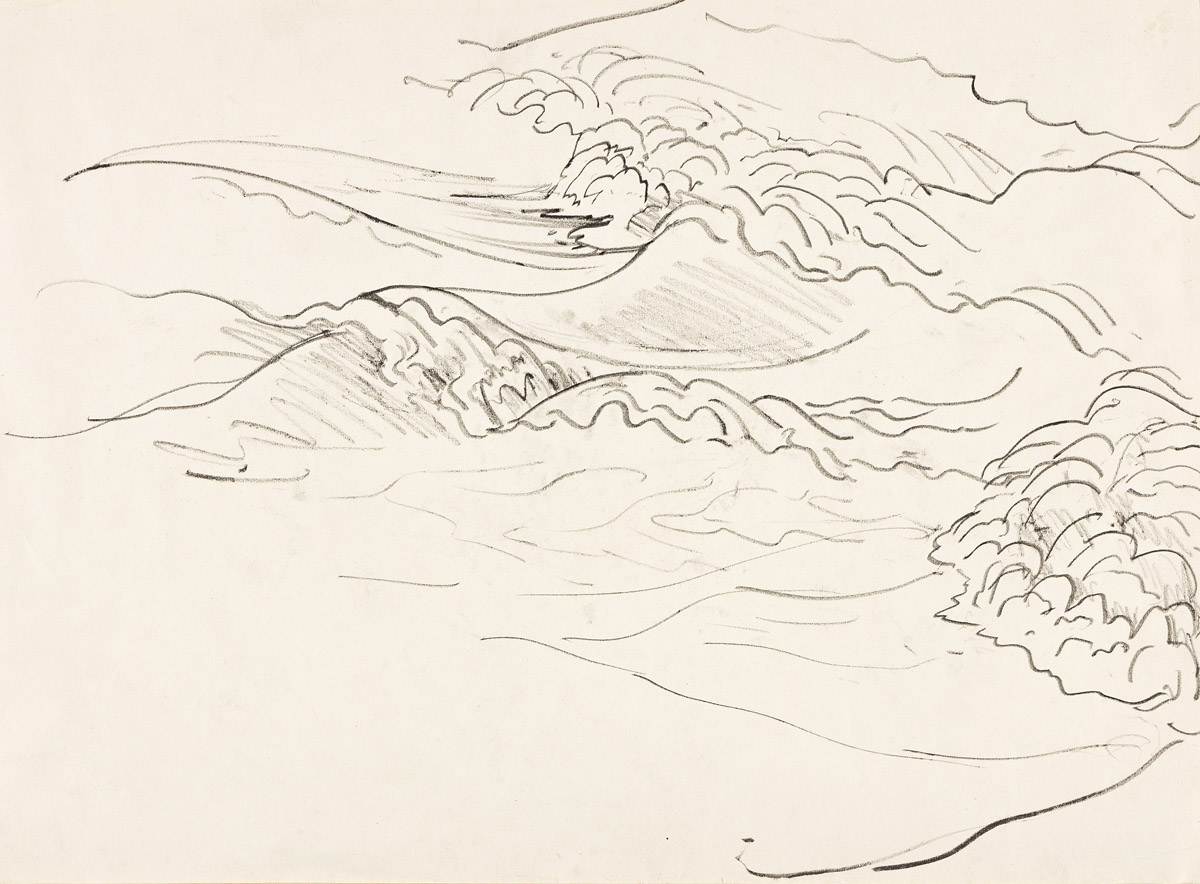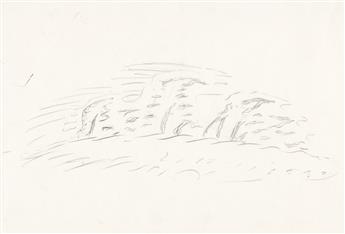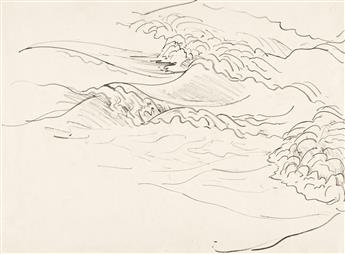Sale 2611 - Lot 149
Unsold
Estimate: $ 2,000 - $ 3,000
CHARLES BURCHFIELD
Three pencil landscape studies.
The Grove, circa 1913. With color notes in pencil * Rolling Landscape, circa 1950s * Queen Anne's Lace, circa 1957. Various sizes and conditions.
Provenance: Raydon Gallery, New York; private collection, Chicago.
The last drawing is likely a study for the same-titled watercolor, 1957, now in the Detroit Institute of Arts.
Burchfield's (1893-1967) works transcend the Regionalist label that is often applied to the artist. He both a realist and abstractionist. Though he strived to create a strong sense of human emotion and thought in his works, he often did not simply document the reality of his surroundings (he lived most of his life in small towns). Like William Zorach and Emil Bisttram, Burchfield saw nature as being endowed with mystical and mysterious qualities, which he communicated in his works.
Burchfield was born in Ashtabula Harbor, Ohio and attended the Cleveland School of Art from 1912 to 1916. He began his career in Buffalo, New York working as a wallpaper designer for M. H. Birge & Sons Company. It was during this time period that Burchfield's work was more rooted in suburban realism. Burchfield and Edward Hopper began their friendship in 1928, after Hopper wrote favorably of Burchfield's work in Arts magazine (Burchfield in turn, wrote an essay for Hopper's 1933 retrospective at the Museum of Modern Art, New York). Hopper wrote that Burchfield, "Has extracted a quality that we may call poetic, romantic, lyric . . . By sympathy with the particular he had made it epic and universal." Like Hopper, Burchfield was able to stop working commercially and focus on painting full time after finding gallery representation. In 1929, Frank K. M. Rehn Galleries in New York, the same gallery that represented Hopper, began showing Burchfield's works. Through the 1930s, Burchfield was the recipient of international recognition; Life magazine declared him one of America's greatest painters in December 1936. In the 1940s, Burchfield's works became more spiritual, transcendental and based in nature.
Three pencil landscape studies.
The Grove, circa 1913. With color notes in pencil * Rolling Landscape, circa 1950s * Queen Anne's Lace, circa 1957. Various sizes and conditions.
Provenance: Raydon Gallery, New York; private collection, Chicago.
The last drawing is likely a study for the same-titled watercolor, 1957, now in the Detroit Institute of Arts.
Burchfield's (1893-1967) works transcend the Regionalist label that is often applied to the artist. He both a realist and abstractionist. Though he strived to create a strong sense of human emotion and thought in his works, he often did not simply document the reality of his surroundings (he lived most of his life in small towns). Like William Zorach and Emil Bisttram, Burchfield saw nature as being endowed with mystical and mysterious qualities, which he communicated in his works.
Burchfield was born in Ashtabula Harbor, Ohio and attended the Cleveland School of Art from 1912 to 1916. He began his career in Buffalo, New York working as a wallpaper designer for M. H. Birge & Sons Company. It was during this time period that Burchfield's work was more rooted in suburban realism. Burchfield and Edward Hopper began their friendship in 1928, after Hopper wrote favorably of Burchfield's work in Arts magazine (Burchfield in turn, wrote an essay for Hopper's 1933 retrospective at the Museum of Modern Art, New York). Hopper wrote that Burchfield, "Has extracted a quality that we may call poetic, romantic, lyric . . . By sympathy with the particular he had made it epic and universal." Like Hopper, Burchfield was able to stop working commercially and focus on painting full time after finding gallery representation. In 1929, Frank K. M. Rehn Galleries in New York, the same gallery that represented Hopper, began showing Burchfield's works. Through the 1930s, Burchfield was the recipient of international recognition; Life magazine declared him one of America's greatest painters in December 1936. In the 1940s, Burchfield's works became more spiritual, transcendental and based in nature.
Exhibition Hours
Exhibition Hours
Aliquam vulputate ornare congue. Vestibulum maximus, libero in placerat faucibus, risus nisl molestie massa, ut maximus metus lectus vel lorem.








